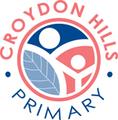
Weekly Wellbeing
Engagement – The ‘E’ PERMAH Pillar
Many things come to mind when I think of the word ‘engagement’: connection, immersion, focus, ring, diamond, party etc. I have recently learnt more about a number of aspects linked to engagement, including ‘flow’.
Dr Mihalyi Csikszentmihalyi (1990) explains flow as moments when you are completely absorbed in a challenging, but doable task (8 Ways to Create Flow, Positive Psychology.com, https://positivepsychology.com/mihaly-csikszentmihalyi-father-of-flow/ Accessed 29/7/2021).
You know those activities that you find yourself so engrossed in that you ‘lose track of time’, or activities that give you so much satisfaction that undertaking them is not a chore, that’s flow. There are 8 characteristics of flow. Click here to learn more about them and even watch a video. There are a few other ways you can maximise flow:
- Reduce distractions while you are doing something that you love. Eg. Turn notifications off on your phone while undertaking a project with your child etc.
- Consider what you do with your downtime. Ask yourself what you can explore and learn rather than automatically (for example) reaching for the TV remote.
- Challenge yourself. Try to make even mundane tasks enjoyable. Set yourself mini challenges. For example listen to music while cleaning the house, set distance goals when walking the dog etc.
Flow is an amazing state to be in and encourage our children to be in. Like anything, it starts with us modelling and encouraging it. Try some new ideas this week to see if you can increase your flow or create opportunities for your children to do so.
Another aspect of engagement is identifying strengths and then engaging in meaningful activities that draw on them. Researchers estimate that we spend about 80% of our time focussed on fixing/addressing our weaknesses and 20% building our strengths. Cooperrider and Goodwin, 2001 suggest that to capitalise our brain function, we need to flip this and spend 80% of our time building our strengths and 20% of our time addressing our weaknesses. Studies have found that people who regularly use their strengths experience more confidence and energy, are less stressed and happier and are more creative and satisfied (McQuaid and Lawn, 2014).
A great place to start is to have all of your family (children supervised by you, of course) undertake the VIA Character Strengths free survey. After answering a series of questions, you will receive a PDF report rating your 24 character strengths in order from 1-24. Like any survey, there are limitations. Some people agree with their results, while others are surprised. The important thing to remember is that this is a starting point. The results can be a catalyst for:
- Creating great family conversations about people’s responses to their ratings
- Helping family members to affirm each other’s strengths and even tailor household activities to ensure that everyone has a chance to maximise their strengths
- Helping family members to engage in ‘strengths spotting’, where during activities people can draw specific attention to the strengths that they see in others
- Helping people to explore new ways they might like to use their strengths
- Helping people to appreciate the uniqueness of every family member and celebrate this as opposed to trying to get them to engage in activities that are likely to cause them to feel defeated because it’s simply not their area of strength. For example asking people with a ‘humor’ rating of 24 to tell a joke is terrifying to them. It doesn’t mean that they can’t learn jokes, but it is going to take them a long time to do this in contrast to their top strength (for example) of creativity, which will have them easily and proudly produce an amazing piece of artwork.
Enjoy exploring the strengths in your family this week and feel free to email me, Julie.reid2@education.vic.gov.au any feedback about them. I would love to know some strengths of some children so that I can list them in future articles.
Also, check out the Community Page for a cool Writing Competition that Maroondah City Council is running.
Until next time,
Julie Reid, on behalf of the Wellbeing team
Note: Some content in this article has been adapted from the Wellbeing Lab’s resources on ‘Engagement’. https://www.michellemcquaid.com/thewellbeinglab/
